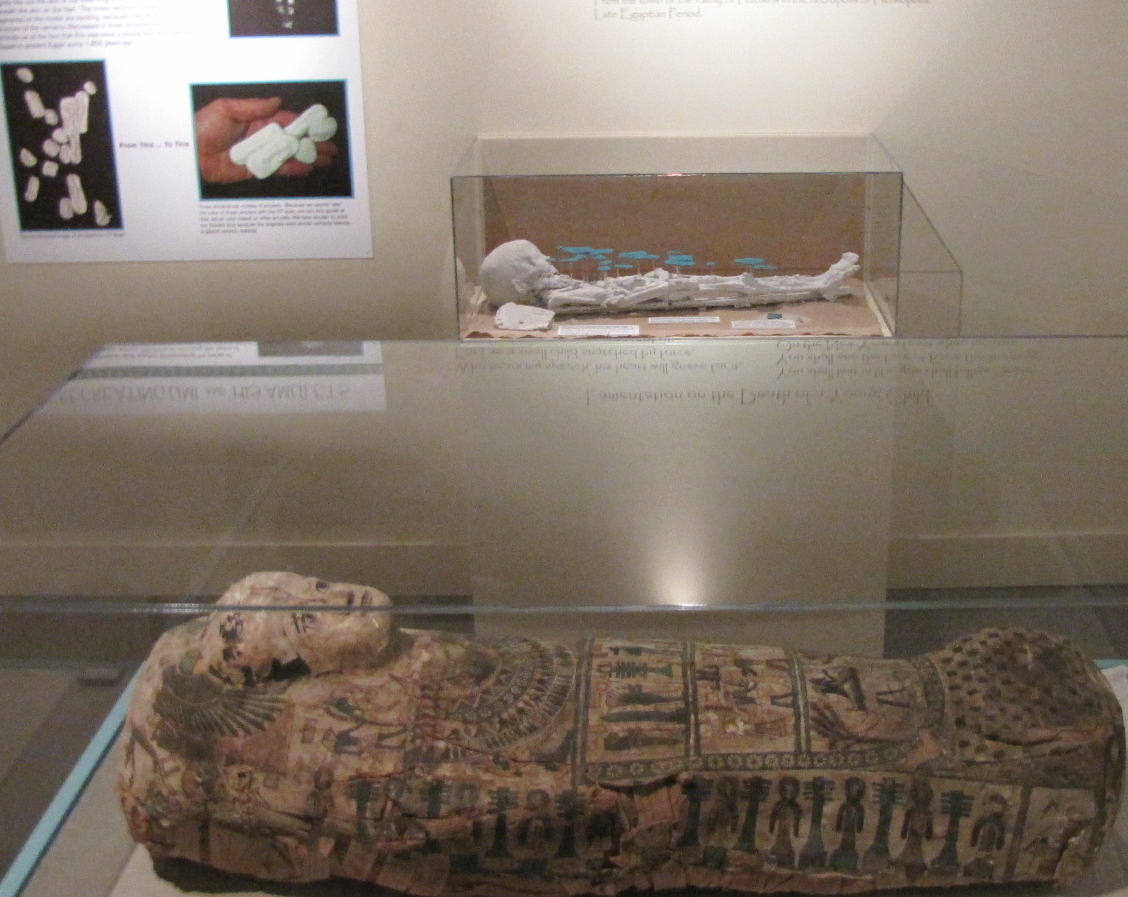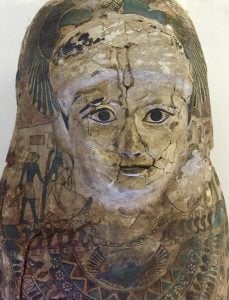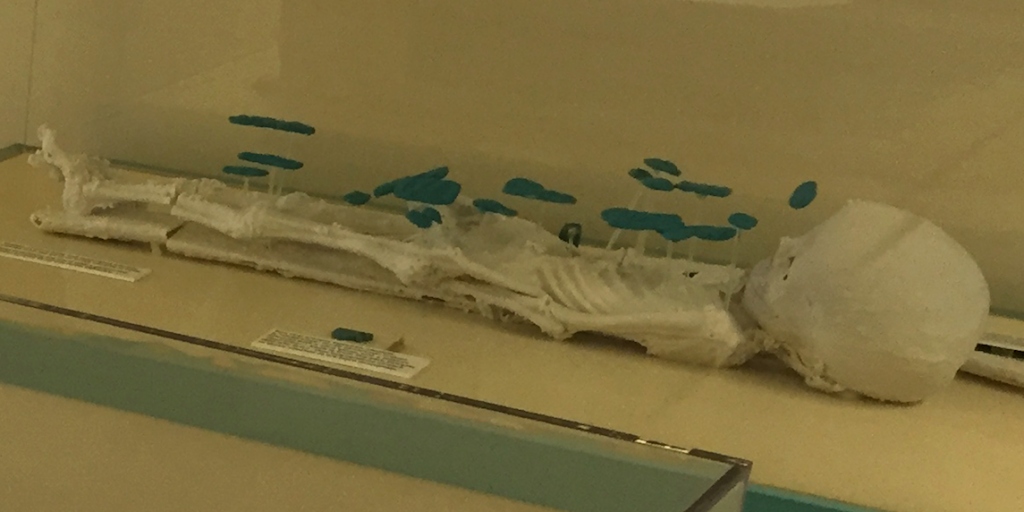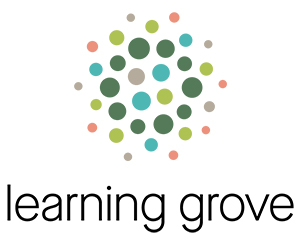Northern Kentucky University’s Health Innovation Center will use its state-of-the-art equipment to help the Cincinnati Museum Center produce new scans, images and replications of Umi, its Egyptian child mummy.
Today the College of Health Professions will do a CT Scan and x-rays on Umi in the HIC’s St. Elizabeth Simulation Center.
Images will be used to 3-D print replicas of amulets placed in the linen surrounding Umi’s body.

The Museum Center’s last scan and 3-D printing was nine years ago. Given advancements in technology, they are looking for more detailed images and possibly answers to some questions.
“We know Umi is between three and five years old based on teeth eruption along the jaw. We don’t have a cause of death, and that is something we would like to learn from this scan,” said Bob Genheimer, Cincinnati Museum Center’s George Rieveschl curator of Archaeology.
“The last scan also shows a dusting along the bones of what looks like cotton fuzz. We think it may be from insects, but we don’t know for sure without detailed images.”
NKU’s Public History Professor Dr. Brian Hackett and Dr. Tom Baxter, Respiratory Care Program director shared the HIC’s high tech capabilities with Genheimer, and the project began to take shape. Because the HIC is an educational setting, the equipment cannot be used on patients, and the scans were easily scheduled.

This also creates a unique teaching opportunity for NKU’s radiology students.
“With this scan, we will need to maximize the contrast because there is no fluid or organs. The skin has been treated with oils to preserve it. This gives my students a rare opportunity to take what they have learned and adapt it for archaeology,” said Jason Applegate, Radiologic Sciences assistant professor. “NKU is one of a few universities to have a CT scanner, and we are very happy to use ours in partnership with the Museum Center.”
NKU’s 3-D printer will recreate 24 amulets placed over Umi’s body in durable plastic. The university will produce a replication of the mummy’s skeleton, too, to replace a version made with delicate materials nine years ago. The x-ray scans will also provide a detailed look at the wooden board on which Umi is resting.
NKU’s public history students will be on hand to observe the process and discuss results.
“This project with the Cincinnati Museum Center, which the university provided a $1,000 mini-grant to fund, brings our radiology students and public history students together in an outstanding example of NKU’s transdisciplinary approach. These learning opportunities enrich our students’ educational experience and broaden their perspectives,” said NKU’s Provost Sue Ott Rowlands.
The Museum Center plans to open the Umi exhibit in the spring, and updated replications of the amulets and skeleton will be included in the display.
For more information on NKU’s Health Innovation Center and all of the university’s programs, visit nku.edu.




















